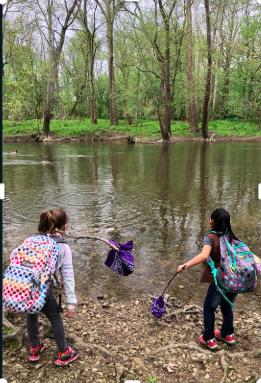What Waters Count?
 Why you need to comment on Trump’s proposal to limit the power of the clean water act. (Click here to comment)
Why you need to comment on Trump’s proposal to limit the power of the clean water act. (Click here to comment)
What’s the problem?
Under the Trump Administration, the EPA is proposing to narrow the definition of waters that are protected under the Clean Water Act. This proposal would strip nearly half of our national waters of their federal protections, leaving them vulnerable to damages from industry, development, and agriculture.
What’s the history?
In 1972, the EPA established the Clean Water Act “to restore and maintain the chemical, physical, and biological integrity of the Nation’s waters.” This act has been incredible successful and is one of the environmental movements biggest impacts. You’re favorite swimming lake and fishing spot is likely due in part to the Clean Water Act. Although it has not been completely achieved, we have come a long way to meeting one of the water quality goals of the Act, “to make all U.S. waters fishable and swimmable”.
But the Clean Water Act did not define which specific waters were included among the “navigable waters,” or “waters of the United States” (WOTUS). Territorial seas? Yes. The Great Lakes? Of course. Major rivers and streams? Sure! All covered. But what do we do with ephemeral waterways (streams or creeks that run seasonally, but not year-round) or wetlands (they’re damp, yes, but “navigable”?) or groundwater (which we can’t even see)?
The EPA has implemented rules to define these waters, but they have been controversial. In 2015, the EPA under the Obama Administration conducted an extensive scientific review of how waters are connected and consequently attempted to clarify the definition of WOTUS by invoking a concept called “the significant nexus.” According to this standard, the Clean Water Act protects any type of water (ephemeral stream, wetland, groundwater) as long as an ecological connection can be established between that space and a more traditional navigable water. The 2015 policy expanded the reach of the Clean Water Act, which was great for the environment but not so great for industry and agricultural groups who needed to acquire costly permits and curb their environmental damages.
Under the Trump Administration, the EPA is proposing a narrower definition of WOTUS that will remove federal protections from the waters and wetlands that are not so easy to categorize.
What’s at stake?
All of our watersheds are interconnected networks. Even the smallest, most ephemeral streams can carry toxins into groundwater, wetlands, or larger bodies of water. Many surface waters are connected to the groundwater that we pump for drinking water. Wetlands with no visible water connection to larger waters process and remove pollutants, increase water flows during droughts, and provide catchment basins that reduce flooding.
If Trump’s EPA succeeds in stripping nearly half of national waters of their protections under the Clean Water Act, here’s what we fear:
-
Human health risks and increased costs. Pollution from contaminants, like nitrogen, will proliferate in surface and ground waters. Cleaning these contaminants from drinking water sources will be costly, not practical for all contaminants, and will also negatively impact fishing, swimming, and other water recreation.
-
The destruction of native habitats and the loss of unique animals and bird populations.
-
The intensification of floods and drought due to climate change and the loss of wetlands.
What can I do?
Tell the EPA that you value clean water over corporate interests by adding your comments and concerns here. Feel free to use one of the statements below or to come up with your own.
I oppose the proposed rule that would remove about 50 percent of wetlands and at least 18 percent of stream miles from the waters that are under the jurisdiction of the Clean Water Act.
The science is clear. Ephemeral streams and wetlands that are not visibly connected to other waters are often connected chemically or hydrologically. If streams are not protected, they can become sources of pollution to downstream waters. If wetlands are not protected and are allowed to be drained and filled in, all of the ecological benefits they provide will be lost.
Our children’s children are relying on us to protect water that is clean and to clean up polluted water so they can use it for health and prosperity as we do. The proposed rule will not accomplish our responsibility to future generations.
The removal of tributary streams and wetlands that are not visibly connected to other waters will inhibit the goals of the Clean Water Act. Any new rule should be based on evidence and science. This proposed rule does not recognize the connections between waters and fails to follow good science that is available. I urge the EPA to retract this rule.